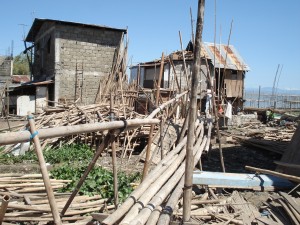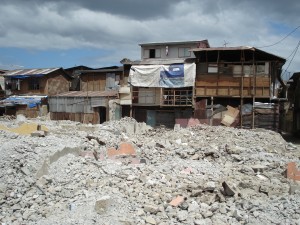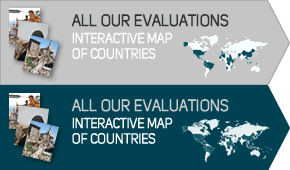October 22, 2010
During the third quarter of 2009, three typhoons swept across the Philippines. Typhoons Ketsana and Parma struck on the 26th of September and on the 3rd of October, causing extensive flooding. Typhoon Mirinae caused further casualties and destruction when it struck on the 31st of October.
Read the report from OCHA website
Read the interview with Riccardo Polastro
Read more about the evaluation
The typhoons killed almost 1,000 people, destroyed over 46,000 houses and caused significant damage to over a quarter of a million homes. Over 10 million people were affected, with some 700,000 physically displaced.
The Philippines is among the 15 most hazard-prone countries in the world, with one third of its population living in at-risk areas. For this reason, the country has dedicated significant resources to its capacity for disaster management and response. Under normal circumstances, the Government of the Republic of the Philippines (GoRP) has the capacity to manage a response to natural disasters. However, because of the magnitude of the typhoons, assistance from the international community was requested.
The GoRP and the international community responded to the disasters by releasing emergency relief stocks and launching search and rescue operations. Teams, including the Inter-Agency Standing Committee (IASC), cluster leads and the National Disaster Coordinating Council (NDCC) carried out initial rapid assessments in order to identify priority needs.
Evaluation of effectiveness and efficiency
Given the exceptional magnitude of the disaster, the international community considered that there were valuable opportunities to commission an Inter-Agency-Real-Time Evaluation (IA-RTE) of the humanitarian response in Philippines. The purpose of a real-time evaluation is to provide immediate feedback on findings, conclusions and recommendations to on-the-ground humanitarian actors so that they can benefit from the information as quickly as possible.
DARA was commissioned to conduct the IA-RTE, which focused on the effectiveness and efficiency of the response including coordination, timeliness, analysis of clusters and management of systems.
Low overall donor commitment
In October 2009, after Ketsana, the UN launched a flash appeal for $74 million. A month later, after Parma and Mirinae, it was revised to $143.7 million. According to the UN’s Financial Tracking Service, only 39.2 percent of that appeal has been funded.
Outside the UN flash appeal, the country also received bilateral support from donors such as the United States, Australia and ECHO. Nevertheless, the overall donor commitment remained low.
Because it is a middle-income country, donors do not consider the Philippines a priority destination for their humanitarian funding and tend to focus only on emergency relief. A factor that explains why donors just focused on short-term funding is the fact that the GoRP asked the World Bank to carry out a Post-Disaster Needs Assessment. Therefore the recovery needs were addressed by other funding channels, mainly through loans. The assesment estimated that $942.9 million were required to meet recovery needs, while $3.48 billion were needed for reconstruction.
More integrated coordination needed
The international community coordinated the response, together with the GoRP and the NDCC. DARA found that both national and international actors did not always understand the roles, mandates and mechanisms of clusters. The existing parallel coordination systems, one for national coordination and the other in charge of coordinating the international effort, mostly operated as one forum during the disaster.
Additionally, a series of needs assessments were carried out in the aftermath of the typhoons. DARA has found that many of them were not carried out in a coordinated fashion and lacked a common approach. These assessments also lacked analysis on the identified needs and on the linkages among them. This reduced the level of efficiency of the aid and hampered coordination and information flow among humanitarian actors.
Improving preparedness and planning
The evaluation team has found that assistance from the international community complemented the national response and was of significant value in areas where the emergency was prolonged.
However, several interviewees also said that international response was initially reactive and “running behind the challenges”. The levels of preparedness among the humanitarian actors differed. When the disasters struck, the Red Cross and NGOs with longstanding presence in the country responded swiftly. Comparatively, it took more time for the UN to mobilize.
Key findings and recommendations
The report concludes that the international response to the typhoons arrived late. On a more positive note, it also found that humanitarian efforts did save lives weeks after the disasters, notably by preventing waterborne diseases through access to potable water.
DARA also found that some of the identified needs were not met, mainly due to lack of funding. Today, many people remain in a situation of displacement, with ongoing needs for shelter, protection, and the restoration of their livelihood.
DARA’s report has specific recommendations on how to improve donor and international response for disaster-prone, middle-income countries:
- The Humanitarian Coordinator and OCHA should limit the preliminary Flash Appeal to a two to three-week period in order to address the most critical needs.
- The donor community should develop an emergency response fund in order to mobilize rapid responses to sudden crises.
- The IASC, the HCT and the NDCC must develop a contingency plan before the next typhoon season in order to define the roles and responsibilities of response actors.
- IASC, the Humanitarian Country Team (HCT) and the cluster leads should carry out more joint needs assessments. They should also adopt a common approach.
- It is essential to recognize national capacity and to involve beneficiaries in the humanitarian effort.






Share this